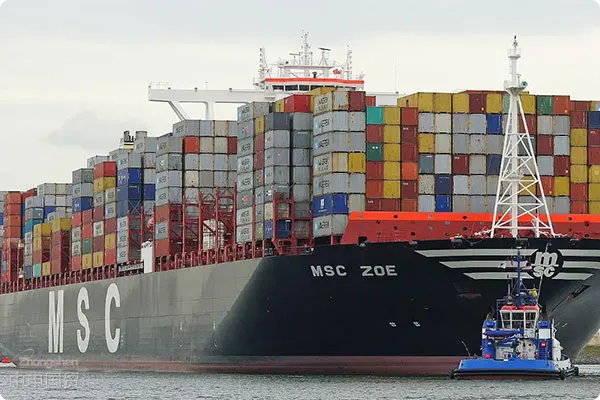- Shanghai Zhongshen International Trade Co., Ltd. - Two decades of trade agency expertise.
- Service Hotline: 139 1787 2118
Accurate customs classification is an indispensable part of international trade. It affects the efficiency of customs clearance. Let us explore this seemingly mundane but highly significant field through specific examples of commodity classification, unveiling the mysteries of customs classification codes and clearance procedures.

I. Basic Concepts of Classification Codes
Commodity classification codes are unique identifiers assigned to each product based on internationally recognized classification systems. These codes reflect the essential attributes and characteristics of goods and serve as critical references for customs officials to determine product categories and tariff rates. They not only affect tariffs but also directly influence the speed and cost of customs clearance. Proper classification helps companies avoid unnecessary financial burdens and legal risks, ensuring smooth customs clearance. For example, different foods, chemical products, or machinery equipment have very detailed distinctions in customs classification standards, and even minor errors can lead to significant tariff differences.import and exportSo, how is this seemingly simple code generated? In reality, it follows strict rules and standards. Customs codes are based on the International Convention on the Harmonized Commodity Description and Coding System, which summarizes objective descriptions, composition, and uses of goods to determine the final code. This convention is frequently updated to accommodate new products and ensure the timeliness of codes.
Commodity classification is far from simple. Given the vast variety and diverse characteristics of goods, accurate classification requires professional judgment. For example, some goods may not have specific entries in the tariff schedule and must be classified based on their uses or composition. Others may span multiple tariff headings, requiring identification of the most specific code. Below are some classification examples from 2024:
II. Analysis of Commodity Classification Examples
Crushed Dried Chili Peppers:
According to classification decision Z2024-0001, crushed dried chili peppers are classified under HS code 0904.2200. Although crushed, they remain within the original product scope and are still considered broken dried chili peppers. Therefore, under General Rules of Interpretation 1 and 6, they should be classified under the corresponding tariff heading.Live Phosphorus-Potassium:
Active Phosphorus and Potassium:According to the code Z2024-0002, Live Phosphorus Potassium belongs to liquid preparations and is a type of compound microbial fertilizer, classified under HS code 3105.9090. This product combines the characteristics of microorganisms with traditional fertilizers, used for soil improvement and plant nutrition, reflecting new trends in modern agricultural development.
Potassium Humate:Item No. Z2024-0003: Due to the primary use and component characteristics of potassium humate, it is classified under 3824.9999. This is attributed to its non-compliance with any specific fertilizer standards, instead serving as part of chemicals used in various industrial and agricultural applications.
Common Mode Inductor:According to the code Z2024-0004, the common mode inductor is a key component on the control circuit board of electric vehicle charging cables, used for filtering electromagnetic interference, classified under HS code 8504.5000. This demonstrates that while electronic products continue to innovate and develop, the classification of their components must keep pace with technological advancements.
Optical Transmitter Module:Item No. Z2024-0005: This is a critical component in fiber optic communication equipment, classified under tariff code 8517.7990. This classification reflects the specialization and specificity of optical communication technology, with the optical transmitter module as part of the system, demonstrating its dedicated use in the communication industry.
Artificial Knee System Components:According to the code Z2024-0006, artificial knee system components are classified under HS code 9021.3100. This example highlightsMedical Equipmentthe specificity and complexity of classification, particularly in the field of artificial implants.
It is not difficult to see that the classification decision for each commodity is based on a comprehensive analysis of the specific circumstances of the product, including its composition, manufacturing process, and intended use, with reference to relevant laws and standards as the basis. For example, in the second case of Live Phosphorus Potassium, the production process and mechanism of action of the product were first clarified, followed by a reference to the Compound Microbial Fertilizer industry standard, and finally, the classification code was given according to the tariff rules.
III. Basic Steps of Customs Clearance
After understanding commodity classification, let us briefly review the basic steps of the customs clearance process:
Prepare goods and documents:Including commercial invoices, packing lists, shipping documents, and customs classification decisions, etc.
Submit customs declaration:Submit detailed information about the goods through the customs system, including classification codes, value, etc.
Pay taxes and fees:Calculate customs duties and value-added tax based on the classification results and corresponding tax rates.
Customs inspection:Customs reviews and inspects the declared goods to ensure accuracy and compliance.
Release of goods:Once customs approval is obtained and all taxes and fees are paid, the goods can be released to continue the logistics process.
Accurate customs classification and familiarity with the clearance process are crucial for ensuring the smooth progress of international trade. Whether manufacturers, importers, or logistics companies, mastering these basic knowledge points is essential to promote efficient and compliant trade. It is believed that as long as a rigorous and pragmatic work style is upheld, trade endeavors will surely proceed smoothly.
Related Recommendations
? 2025. All Rights Reserved. Shanghai ICP No. 2023007705-2  PSB Record: Shanghai No.31011502009912
PSB Record: Shanghai No.31011502009912










